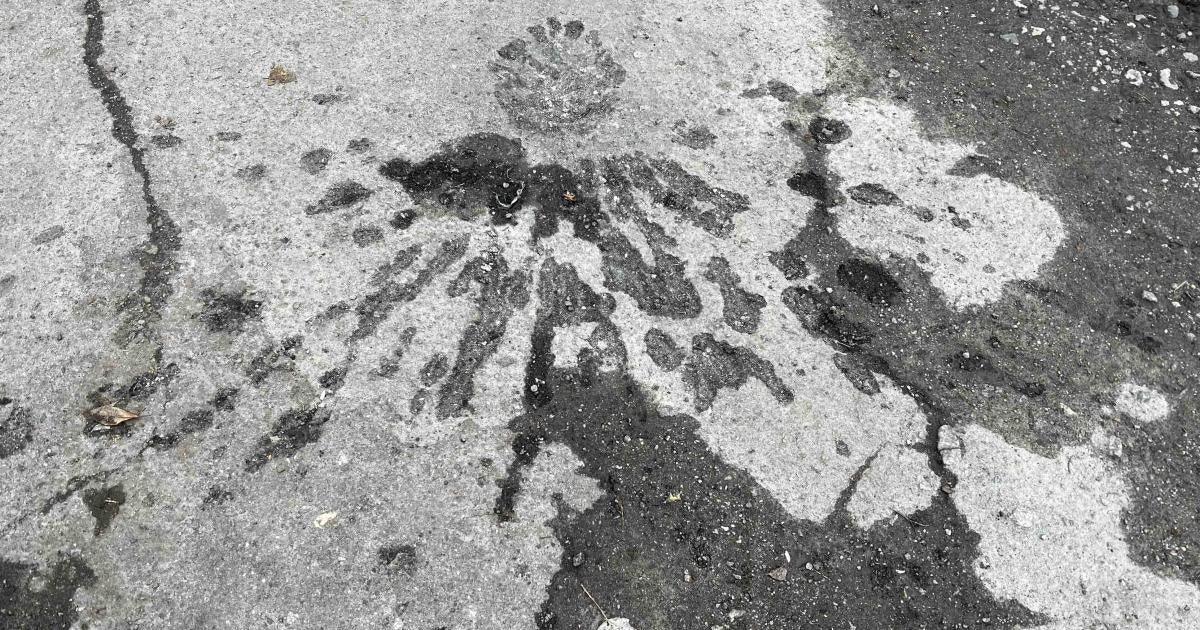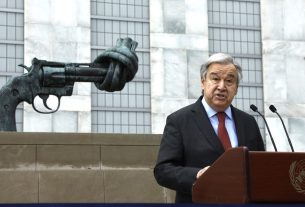[ad_1]
(Kyiv, December 13, 2022) – Russian forces have apparently used cluster munitions on civilian populated areas of Kherson at least three times since they retreated from the city, Human Rights Watch said today. These were part of a series of attacks on the city that resulted in civilian casualties.
“Residents of Kherson survived eight months of Russian occupation, and are finally free from fear of torture, only to be subjected to new indiscriminate attacks, apparently including cluster munitions,” said Belkis Wille, associate crisis and conflict director at Human Rights Watch.
Since November 11, when Ukrainian forces reclaimed the city, Russia has attacked Kherson from across the Dnieper River. As of November 25, the attacks killed at least 15 residents, including a child, and wounded 35, said the head of Kherson’s city council, Halyna Luhova. These attacks have led many civilians to evacuate the city, including patients at Kherson’s Clinical Hospital.
Human Rights Watch researchers were in Kherson city from November 20 to 24. Over those five days, attacks on the city intensified.
At around 12:30 p.m. on November 21, an apparent cluster munition strike wounded three people as they were walking down the street in a populated area. A 29-year-old man said he was on a bus pulling up to Universytets’ka Street in the Dniprovs’kyi district, directly north of the Dnieper River, when he heard several explosions. He got off and saw a woman lying in a pool of blood on the sidewalk. Her left foot had been blown off, leaving the bone exposed. A man whose feet had been blown off was dragging himself from a patch of grass toward the sidewalk. The witness said he had not seen any military forces as he approached the area. Andriy Dubchak, a photojournalist, arrived just minutes later and described the same scene. He said he saw military paramedics and police arriving to take the casualties to the hospital, but no other military presence in the area.
Human Rights Watch researchers visited the site on November 22 and saw pools of blood from both victims. They identified three munition impact sites, one in the grass, another next to the pool of blood on the sidewalk, and the third in front of a nearby shop, fragmentation patterns on the sidewalk were consistent with that of a submunition detonation, and the remnant of what appeared to be a white-colored submunition stabilizer ribbon next to the fragmentation pattern. All of these findings are consistent with cluster munitions. They also indicate that the munitions were fired from the south.
Another three detonations occurred around the same time approximately 400 meters away. Anatoli, a security guard at a nearby car repair garage who did not share his surname, said that a woman was injured in her chest and left arm: “I rushed out of the garage after the explosion and saw her lying on the ground. Underneath her jacket, it looked like porridge.”
Anatoli and his colleague showed researchers the site of another detonation, in the garage yard, and a third in the yard of a group of high-rise apartment buildings across the street. They said they had heard between 6 and 7 distinct explosions in quick succession. Another white-colored stabilizer ribbon was next to the detonation in the apartment yard, and the fragmentation patterns there and on the sidewalk where the woman was injured were also consistent with those of a cluster submunition. The evidence suggests they were also fired from the south. Researchers were unable to confirm whether the three victims survived.
The concentration of the impact sites, the presence of the stabilizer ribbons next to two of the impact sites, and the direction of the fragmentation patterns, together with the witnesses’ descriptions of the attacks, indicate that the attack used cluster munitions.
Researchers spoke to a Ukrainian soldier in Bilozerka village, 9 kilometers west of Kherson, where an attack on November 19 hit an aid distribution line, wounding at least eight civilians, according to authorities. The soldier, who asked for anonymity, said that there was a military presence in the village, but not at the aid point. He was off duty and was walking to the nearby market when he heard multiple explosions in quick succession next to a long line of civilians waiting for food and water at the distribution point. He said he saw eight wounded civilians and a soldier. He described finding small pre-formed metal fragments, like those found inside cluster munitions, on the ground after the attack. Researchers were unable to visit the area because of ongoing attacks.
Serhii Kindra, 42, stayed in Kherson with his family throughout the occupation. He said that on November 22 at around 11 a.m., he was driving his sons – Timofy, 10, and Matviy, 13 – home from church on a main road near Antonivska Bridge, just north of the river, when he heard a series of explosions in quick succession, including one near the back of the car, one at the front, and one on the right side. The explosions sent glass and metal fragments into the car.
“When I turned around, I saw Matviy lying on top of Timofy,” Kindra said. “[Matviy] had major injuries on his head, stomach, legs, and arms. We rushed him to a nearby checkpoint and from there to the hospital. The doctors tried to close the wounds in his stomach and liver. He fought for his life for 10 hours. During that time, his heart stopped twice but the doctors were able to bring him back. He was a real fighter, a real hero.”
Kindra and Timofy were also injured, with cuts on their faces and arms. Kindra needed stitches on his nose and forehead, and doctors removed a small metal fragment from Timofy’s back. Researchers interviewed two journalists who met Kindra and his sons at the hospital and confirmed the nature of their injuries.
Researchers took that same road earlier that day and saw no fixed military presence in the vicinity besides the checkpoint. Kindra shared photographs of the damage to his car, and of his and his sons’ injuries. The damage to the car body and windows was caused by the impact of numerous uniformly sized metal fragments created by the detonation of ground-fired fragmentation submunitions.
Researchers were not able to determine whether all the attacks in which civilians were killed involved cluster munitions. On November 22, a 13-year-old boy was injured, according to two people who arrived at the boy’s home just after the attack. They said the boy had been injured by an explosive munition just before 4 p.m. in the yard outside his home, in a residential neighborhood on the road out of the city toward Mykolaiv. Both said they did not see any military forces in the area at the time, which researchers were unable to confirm. They visited the boy later in the hospital after his arm had been amputated. They were unsure what munition was used in the attack.
Since the full-scale invasion of Ukraine, Russian forces have repeatedly used cluster munitions, which are inherently indiscriminate weapons, in attacks that have killed hundreds of civilians and damaged homes, hospitals, and schools. Cluster munitions typically explode in the air and send dozens, even hundreds, of small submunitions over an area the size of a football field. Explosive submunitions often fail to explode on initial impact, leaving duds that act like landmines. Cluster munitions are banned by an international treaty, which neither Russia nor Ukraine has joined. Regardless, the use of cluster munitions in areas with civilians makes an attack indiscriminate in violation of international humanitarian law.
Researchers saw some limited military presence in the city of Kherson, but the majority of forces they saw in the city were police carrying out law enforcement duties.
Notwithstanding the existence of a legitimate military target, an attack is indiscriminate and unlawful if it uses a method or means of combat the effects of which cannot be limited to military objects. Given the inherently indiscriminate nature of cluster munitions and their foreseeable effects on civilians, their use in Kherson might constitute a war crime and should be investigated.
“These attacks are being carried out with no apparent regard for civilian life,” Wille said. “They are a direct rebuke to claims by Russia that it is only targeting the military.”
[ad_2]
Source link



